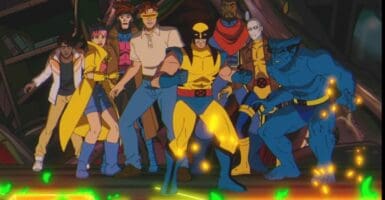Watch This Rare Documentary About The Science Of 2001: A Space Odyssey
This article is more than 2 years old
“It is the year 2001. You’re on your way to a space station… on routine business.” In 1966, Look magazine released a documentary on the making of Stanly Kubrick’s 2001: A Space Odyssey and the science featured in the film. Vernon Myers, the publisher and president of the magazine, bookends the documentary, announcing that Look would feature the film in its magazine to coincide with its then-1967 release date. If you remember, Kubrick got his start in photography working for the magazine as a young man, so it makes sense that his former-employer would want to feature his upcoming film.
The documentary is called A Look Behind the Future, and provides an interesting glimpse at what people in 1966 thought the future of the year 2001 would be like. It was spotted by the good people at Movies.com. While it features real-life technological developments in space exploration, it’s almost eerie how people looked at space exploration three years before we landed on the Moon with Apollo 11 in 1969.
Kubrick is known as being a very meticulous director. He wanted every detail correct on every facet of his films. He would spend years researching before shooting a second of footage. Even though 2001: A Space Odyssey was one of his earlier works; he spent the same time and energy to make the space epic as realistic as possible. If you watch the film today, it’s uncanny to see how realistic it still appears to modern audiences. Part of the realism came from hiring the best people in the field of space science and photography to make his vision a reality.
The 23-minute documentary takes a look at how Kubrick managed to create a sense of weightlessness in a time before CGI was ubiquitous. Interestingly, his camera crew had to create unique camera rigs to re-create zero gravity in a sound stage on Earth. Forty-five years later, director Alfonso Cuarón created that same weightless feeling in the blockbuster Gravity. Part of the illusion of 2001 was thanks to the film’s set, most notably the iconic spinning centrifuge, and the film’s star Keir Dullea, who played Dr. Dave Bowman in Kubrick’s space film. The documentary also features the film’s co-screenwriter Arthur C. Clarke. This is a big treat for anyone who loves science fiction.
At the time, 2001 was seen as a prediction of how people would live 35 years in the future. Now the film is seen as a classic of the genre and a milestone in cinema. Kubrick pushed the boundaries of storytelling and film structure and understanding, elevating the genre and the medium to a true art form along the way. Even today, audiences still wonder and debate the ideas Kubrick was getting at.
Ultimately, 2001 is a movie about mans place in the universe and in history. A documentary like A Look Behind the Future shows that even if its filmmaking seems dated, the film is a timeless piece of sci-fi.












